Charlene Rose wanted her mobility back.
For two years, the 65-year-old Greensburg native grappled with debilitating neck and head pain that seemed to be getting worse.
Every time she turned her head even slightly to the left, a sudden jolt that felt like an electric shock reverberated from her upper spine to the top of her head. An earache throbbed day and night.
Known for her impeccable homemaking skills — and formerly running a medical facility cleaning company — Rose hated that she couldn't carry out daily chores. She struggled to clean and cook. She could no longer safely drive. Rose only avoided the painful shocks by tilting her head awkwardly to the right and holding it there.
"I had to walk around with my head tilted. I could never straighten my head. I couldn't work like that," recalled Rose, who reluctantly quit her job at Walmart this past spring.
Physical therapy alone wasn't working, and Rose was getting desperate. She finally found a doctor who said he could help — Dr. Kevin Walsh, a neurosurgeon who runs the Adult Spinal Deformity Center at Forbes Hospital in Monroeville.
Walsh proposed a pair of surgeries, to be performed back to back, to correct cervical spine deformities and replace Rose's degenerated vertebrae with strong cadaver bones via a spinal fusion. If his plan worked, Rose likely still would live with some level of chronic discomfort, but she would be freed from the sudden shocks and never-ending headaches and earaches.
The catch: recovery would be long and agonizing.
"I'm going to have to cause you pain to heal your pain," Rose recalled Walsh telling her.
She decided to go for it.
What she didn't anticipate was just how excruciating the recovery would be and how reliant she'd become on her 79-year-old husband, Joe. And she definitely didn't foresee how frightening it would feel to confront a series of unexpected complications.
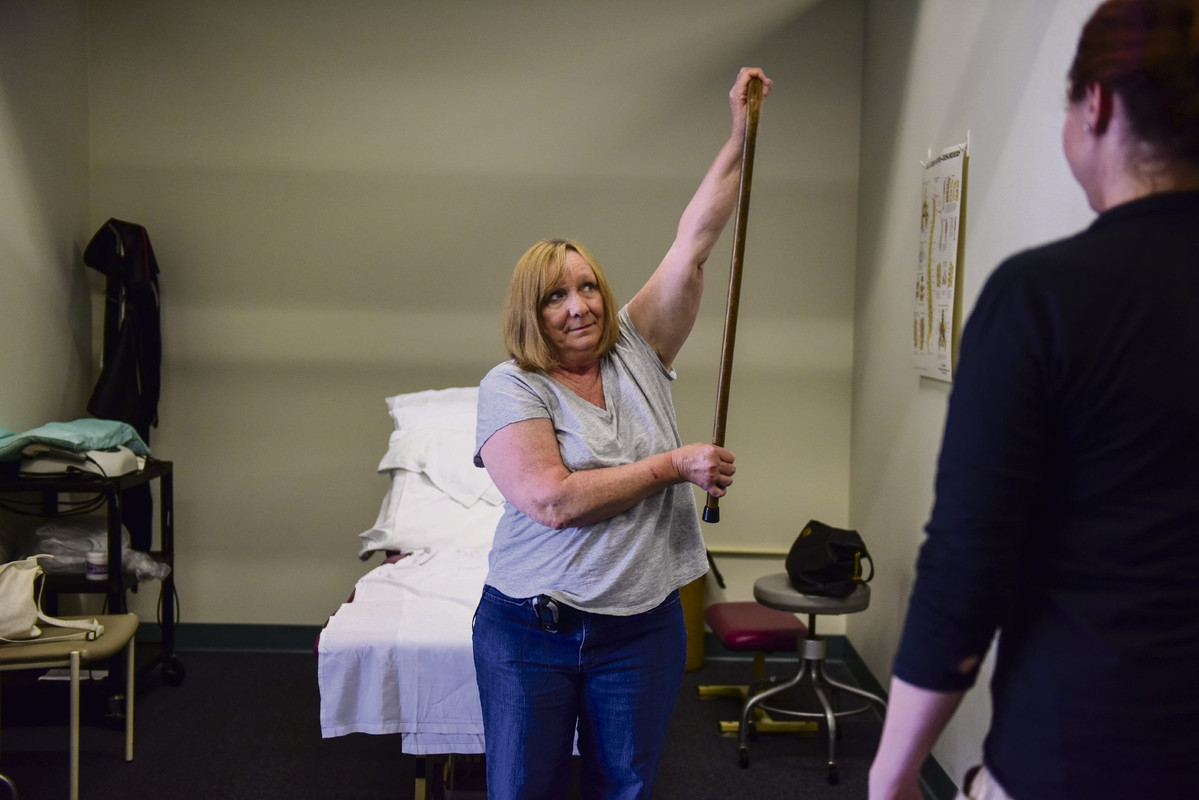
Charlene Rose, 65, of Salem works with physical therapist Molly Bruggeman at Excela Health Outpatient Rehabilitation, in Delmont on Monday, July 23, 2018.
THE SURGERY
More than 200,000 patients undergo cervical spine surgeries annually, the American Association of Neurological Surgeons reports. Typically, the procedure is reserved for intolerable pain that can't be cured otherwise. Rose presented a challenging case because she had compounding issues — a degenerative disc disease as well as a spinal deformity caused by kyphosis, an inward curvature of the spine that forces the patient's head forward.
Treating her would require two surgeries in one day, so Walsh could cut through both the front and back of her neck.
On the morning of May 21, Rose lay on her back under anesthesia inside an operating room at Forbes Hospital. Walsh and his team surrounded her.
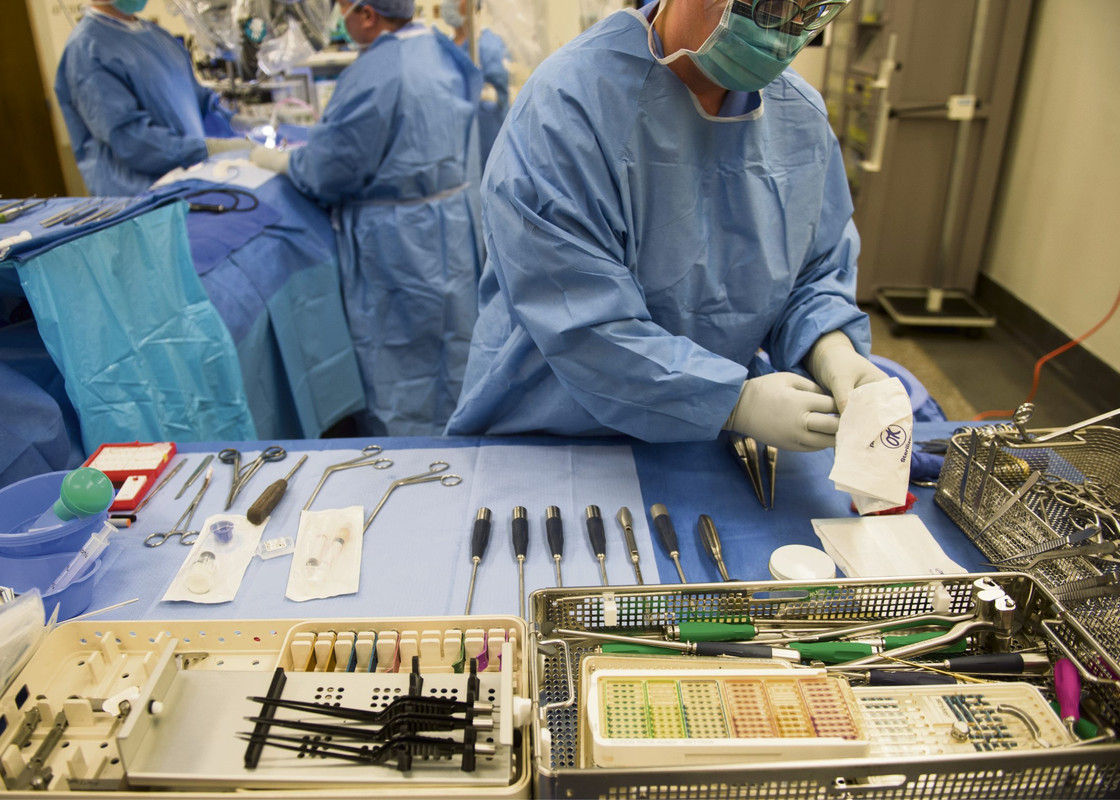
Surgical tools are laid out inside an operating room at Forbes Hospital in Monroeville on May 21, 2018.
An X-ray of Rose's spine mounted along a wall made visibly clear what was wrong — the insides of three vertebrae looked deteriorated, appearing gray and black and crumbling in comparison to the rest of the solid white, healthy bones lining her spinal cord.
Using a surgical robot and $500,000 microscope, Walsh patiently scooped out the degenerated vertebrae pieces before screwing in healthy replacement bones from cadavers.
About five hours in, Walsh closed the first incision. A few more medical workers hustled into the OR to prep the for "the flip" — a move that saves time and improves safety by using the same specially equipped, $120,000 operating table without having to move the patient.
The double-surgery was expected to take 10 to 12 hours. But 14 hours after the surgery started, Walsh told Rose's husband they needed more time.
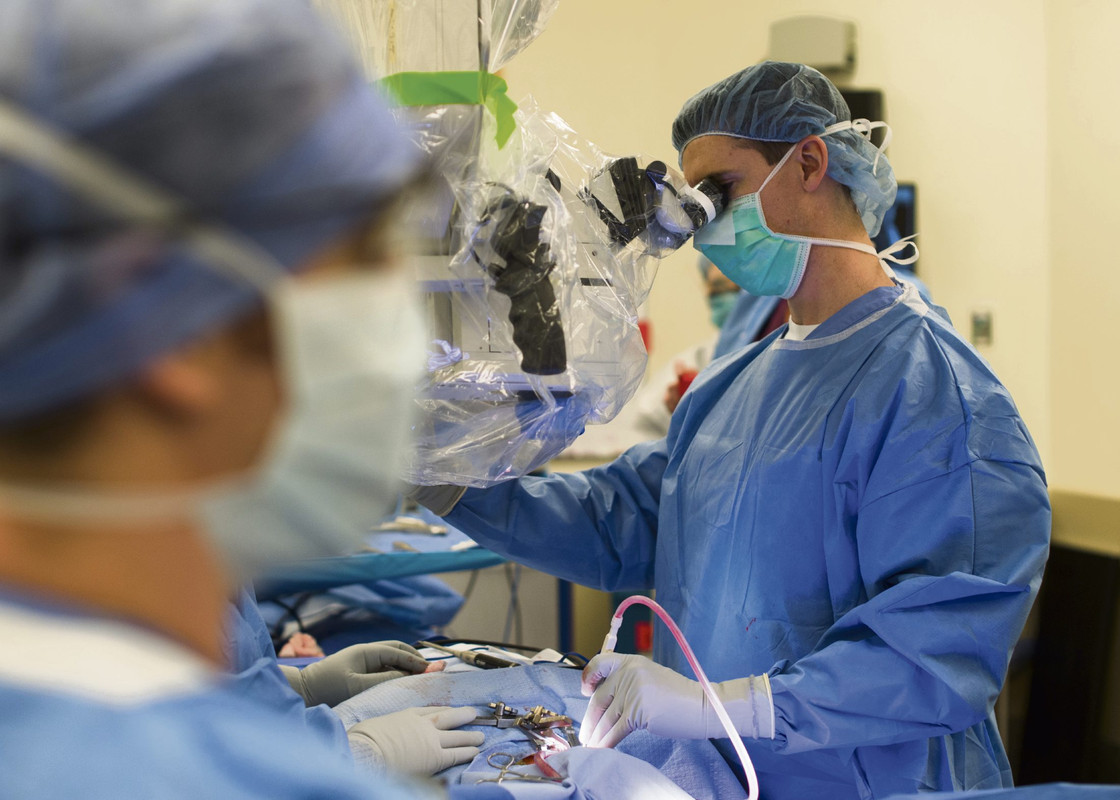
Surgeons work inside an operating room at Forbes Hospital in Monroeville on May 21, 2018.
There had been a "mishap" with a piece of equipment during the surgery, Walsh said. When Rose woke the next morning, she wondered what had happened to her very sore and stitched-up head.
"You were operating on my neck," she recalled telling Walsh. "How could there be a hole in my head?" A nurse explained a clamp that holds the head during surgery slipped, causing a small laceration on the back of her head.
"It is a rare occurrence, but it does happen, especially with the three-point head holder that we have to use for this type of positioning," Walsh later told the Tribune-Review.
The U.S. Food and Drug Administration has warned about the risks of using skull clamp systems, citing more than 1,000 medical device reports resulting in more than 700 injuries — skull fractures, deep cuts, bruises and blood clots — associated with slippage or movement of the clamp before or during surgeries between January 2009 to 2016.
Still, the FDA concludes that the benefits of a skull clamp outweigh its risks — surgeries like Rose's likely couldn't take place without one. Allegheny Health removed the clamp involved and is investigating the incident.
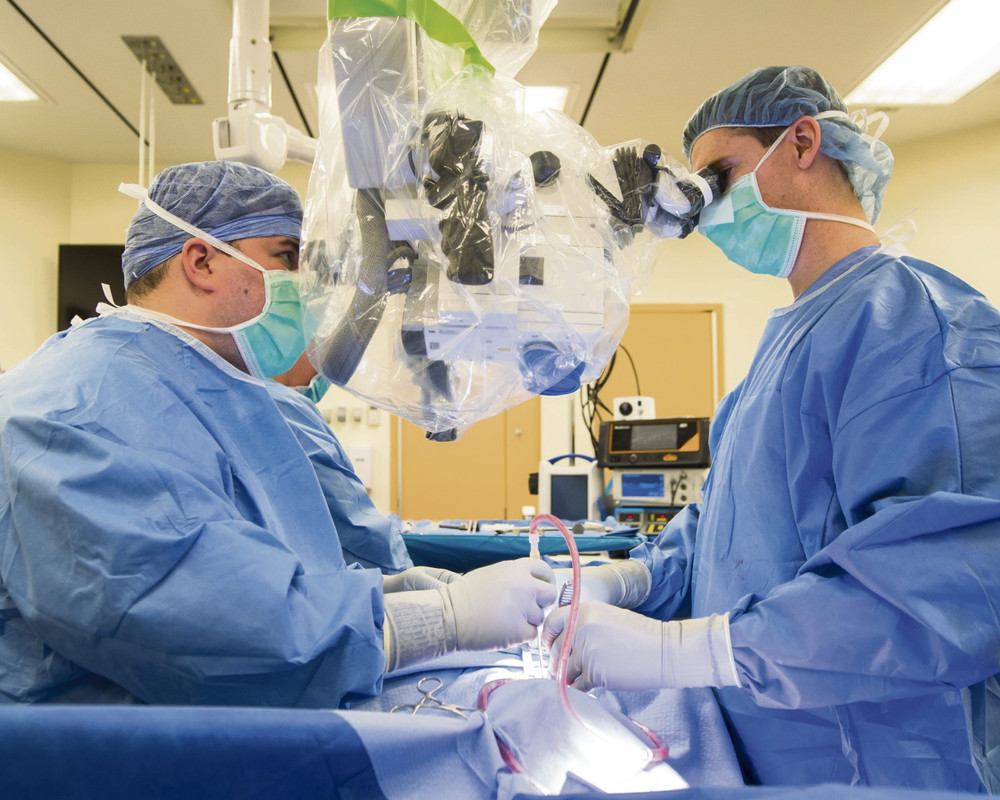
Surgeons work inside an operating room at Forbes Hospital in Monroeville on May 21, 2018.
The unexpected head wound aside, what Rose thought would be a two- to three-day hospital stay turned into a few days in the hospital followed by several more in a nursing home. Then, less than three weeks after the surgery, Rose woke alarmed to find her head and pillowcase soaked in blood. Her wound oozed with crusty, yellowish fluids. A blood culture showed she had a bacterial infection. She'd have to go under the knife again. Complications tend to happen in 20 to 45 percent of similar types of cervical spine operations, and roughly half the time the problem is a wound issue like Rose had in which the incision hadn't closed properly, according to Walsh.
"It's very scary," said Rose. "You don't know if they're going to be able to get it (the infection) all out."
The follow-up surgery in mid-June went smoothly — but the intensity of the pain that followed began to make Rose question the whole thing.
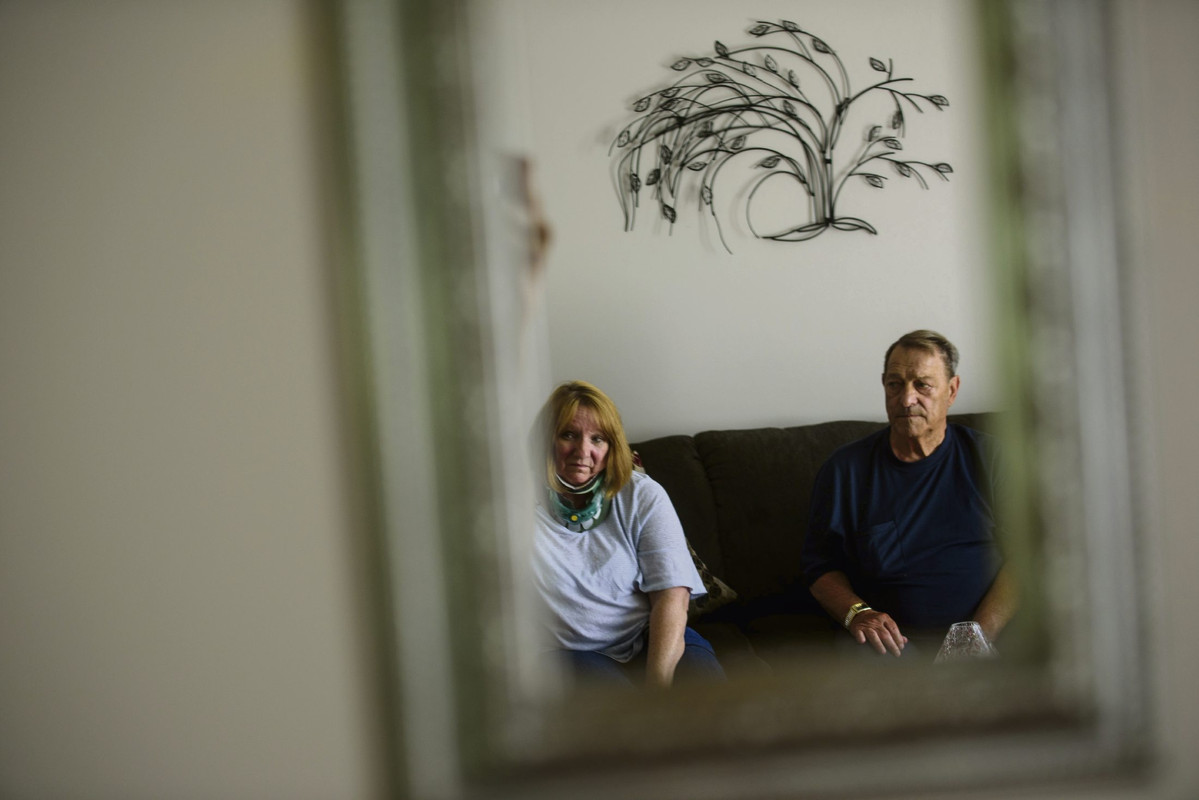
Charlene Rose (left), 65, and her husband, Joe, of Salem are seen reflected in a mirror at their home while talking to reporters about the second surgery she had to go through to clean out an infection on Tuesday, July 3, 2018.
THE RECOVERY
During the first few weeks post-surgery, Rose had trouble sleeping more than a couple hours at a time and often woke to violent stabs of pain.
"When I first came home, I couldn't stand it," Rose said. "Every single muscle and bone in your neck, it was like somebody was stabbing it with a knife.
"I couldn't do anything by myself."
Each morning, her husband carefully helped her out of bed and fixed her breakfast, usually scrambled eggs and toast or toast and coffee, before she took her medications.
He washed her hair and laid out three outfit options before helping her into the one she liked best.
Her oldest daughter came by to clean, and neighbors sent over homemade chicken and vegetable beef soups.
Rose described the pain as "10 times worse" than the electric shocks, with every minor move she made tugging at the long bands of sutures connecting layers of muscles, nerves and skin across her back and down her spine. She said it even felt worse than the time in her late 20s when she and her husband hit a log while riding a snowmobile, throwing Rose into the air and crushing and compressing several vertebrae.

Charlene Rose, 65, of Salem works with physical therapist Molly Bruggeman at Excela Health Outpatient Rehabilitation in Delmont on Monday, July 23, 2018.
She spent seven months with a board strapped to her back, during which she learned she was pregnant. After relearning to stand, she had to walk at least a mile a day to gain strength in the weeks leading up to labor — and she ended up giving birth to her daughter at home before medics arrived.
None of that compared to her post-cervical spine fusion surgery, she said. "I breezed through childbirth," Rose said with a chuckle. "Even when I broke my back, it was nothing like this."
As recently as two weeks ago, Rose thought she might regret the surgery altogether. But, gradually, the pain began to subside.
She weaned off opioid painkillers and got down to taking only Tylenol and her antibiotics.
She started driving again, making short trips to the supermarket so she could whip up homemade treats like pierogis and pineapple upside down cake.
Last week, during her fifth physical therapy session, Rose boasted, "I feel wonderful."
"I'm mobile now," Rose said cheerfully as she performed arm stretches using bungee cords at Excela's physical therapy office in Delmont.
"I do my cooking, and I can clean up the house and make the beds and wash the clothes," she said. "My scars are healing nicely, and it gets a little less painful each day."
Walsh said that Rose "will most likely have some neck pain for the remainder of her life, but if she's already 50 percent better than she was before the surgery, that's a good indicator that she's going to keep improving over time." He anticipated that Rose's full recovery could take three months to a year.
"I told 'em that whenever I can curl my hair," Rose said as she grazed the ends of her chin-length blonde locks with her fingertips, "then I'll know I'm fully healed."
Source : Trib Live , 5th August 2018

Amazing and inspiring recovery story. Spinal fusion is a surgical procedure used to correct problems with the bones in the spine (vertebrae). In order to get best orthopedic surgeons please visit. Thanks!
ReplyDelete